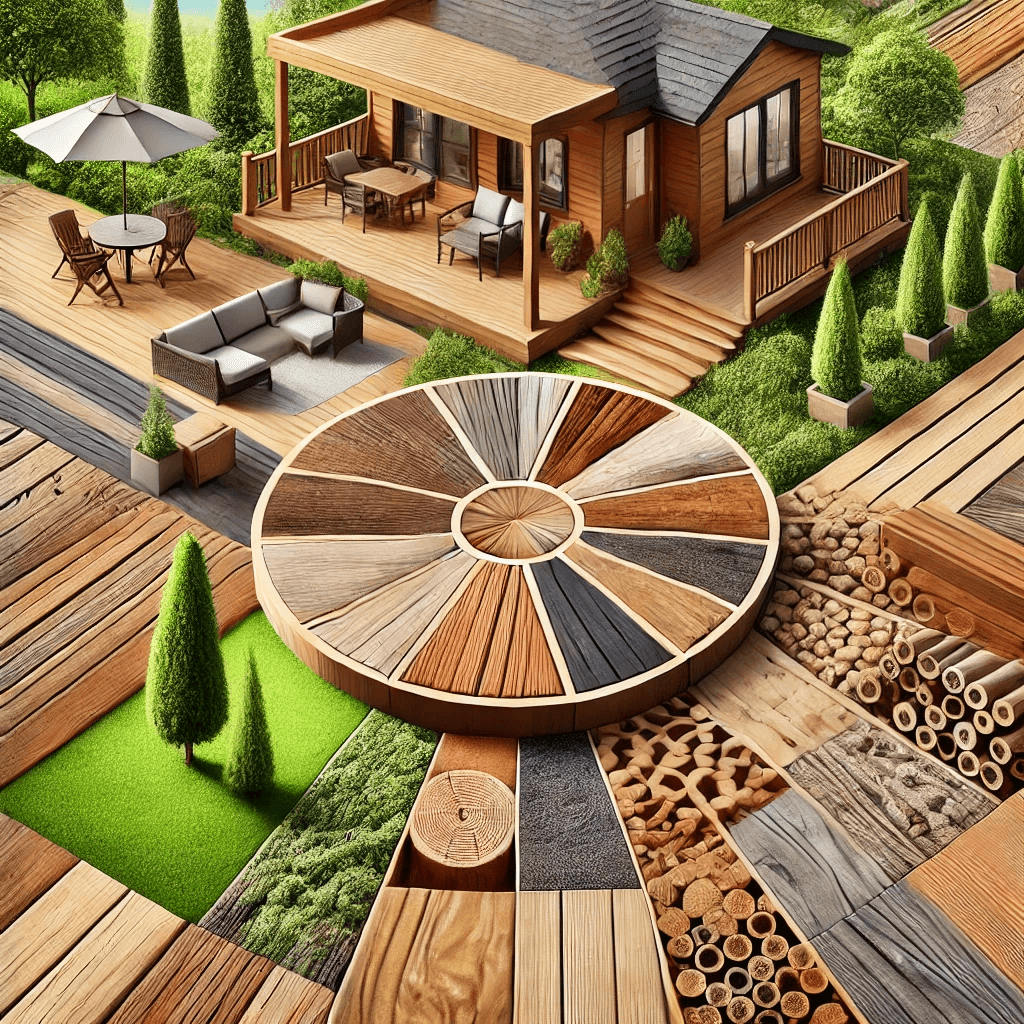Introduction
When selecting outdoor timber for your projects, it’s crucial to consider factors like durability, resistance to decay, and maintenance needs. Treated wood is a popular choice for outdoor use because it is specially processed to resist moisture, insects, and rot, extending its lifespan even in harsh conditions. In addition to treated wood, naturally durable timber options like teak, cedar, and ipe offer excellent performance in outdoor environments without chemical treatments. Understanding the differences between treated wood and natural options will help you choose the best timber for your specific outdoor needs, ensuring long-lasting beauty and functionality.
Selecting the Best Outdoor Timber: Treated Wood vs. Natural Options
When it comes to selecting the best outdoor timber, understanding the difference between treated wood and natural options is key to ensuring durability and longevity. Treated wood is chemically processed to resist decay, insects, and moisture, making it ideal for projects exposed to harsh weather conditions, like decking and fencing. On the other hand, a naturally durable list of softwoods, such as teak, cedar, and redwood, offer excellent resistance to the elements without chemical treatments.

1. Durability and Resistance to Decay
The most critical factor when choosing timber for outdoor use is its natural durability and resistance to decay. Woods that are highly resistant to rot, fungi, and insect damage will last longer and require less maintenance. Some of the most durable timber species for outdoor use include:
- Teak: Known for its high oil content, teak is exceptionally resistant to moisture, insects, and decay, making it ideal for outdoor furniture, decking, and boat building.
- Cedar: It’s a favored option for outdoor structures such as fences, pergolas, and siding due to its durability and ability to withstand various weather conditions.
- Ipe: This dense South American hardwood is extremely durable and resistant to rot and insects, often used for decking and outdoor furniture.
2. Moisture Resistance
Outdoor timber is frequently exposed to moisture from rain, humidity, and ground contact. Look for woods that have natural oils or high density, which can repel water and withstand moisture. In addition to selecting moisture-resistant species, consider applying a protective sealant or wood preservative to enhance the wood’s resistance to water damage.
3. Stability and Movement
Wood is a living material that naturally expands and contracts in response to fluctuations in humidity and temperature, adjusting to its surrounding environment. Choosing timber with good dimensional stability will help minimize timber warping, cracking, and splitting over time. Hardwoods such as teak, ipe, and mahogany types have excellent stability, making them ideal for outdoor use. Kiln-dried wood is also more stable than green or air-dried lumber, as it has lower moisture content, reducing the risk of movement after installation.
4. Maintenance Requirements
Different types of timber have varying maintenance needs. Some woods, like teak and ipe, require little maintenance beyond occasional cleaning and oiling to preserve their color and luster. Others, like cedar and redwood, may require regular sealing or staining to protect against UV rays and maintain their appearance. Consider how much time and effort you’re willing to invest in maintaining your outdoor wood structures and choose a timber that aligns with your maintenance preferences.
5. Aesthetic Appeal
The visual appeal of the timber is another important consideration, especially if the wood will be used in visible outdoor structures like decks, pergolas, or garden furniture.
- Teak has a warm, golden-brown color that weathers to a beautiful silver-grey patina if left untreated.
- Ipe features a deep, dark brown color with a tight, interlocking grain, The wood’s interlocking grain pattern adds a modern and sophisticated element to outdoor spaces, creating visual interest and texture.
- Redwood offers a range of shades from light pink to deep reddish-brown, with a straight grain and coarse texture, ideal for a natural, earthy aesthetic.
6. Environmental Impact
As concerns for the environment grow, sustainability and ecological impact have become crucial factors when selecting timber for outdoor use, ensuring that choices support both quality and conservation efforts. Look for wood that is harvested from responsibly managed forests and certified by organizations like the Forest Stewardship Council (FSC). This certification ensures that the timber is sourced in an environmentally and socially responsible manner, supporting sustainable forestry practices and protecting ecosystems.
7. Cost and Availability
Exotic hardwoods like teak and ipe are often more expensive due to their durability and scarcity, while domestic woods like cedar and redwood are generally more affordable and readily available. When selecting timber for outdoor use, it’s important to balance cost with other factors like durability, maintenance, and aesthetics to ensure you get the best value for your investment.
8. Treatment and Finish
Applying a suitable treatment or finish is crucial to protect outdoor timber from the elements and extend its lifespan. There are several options to consider:
- Sealers and Water Repellents: These protect the wood from moisture and reduce the risk of rot and decay. Water repellents often contain UV inhibitors to protect against sun damage.
- Stains: Wood stains add color while enhancing the natural grain and providing a layer of protection against UV rays and moisture.
- Paints: Opt for paints designed explicitly for exterior applications to ensure optimal protection and durability against weather conditions.
- Oil Finishes: Oils penetrate the wood and enhance its natural appearance while providing some protection against moisture. Teak oil and linseed oil are popular choices for outdoor furniture.
Conclusion
Choosing the right timber for outdoor use involves careful consideration of several factors, including durability, moisture resistance, stability, maintenance, aesthetics, environmental impact, cost, and installation. By selecting a timber species that meets your specific needs and applying proper treatments and finishes, you can ensure your outdoor wood structures remain beautiful and functional for years to come. Whether you opt for the timeless appeal of teak, the natural beauty of cedar, or the rugged durability of ipe, choosing the right wood will enhance your outdoor space and withstand the test of time.














